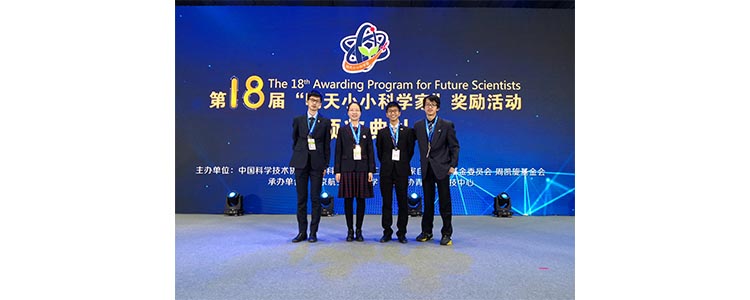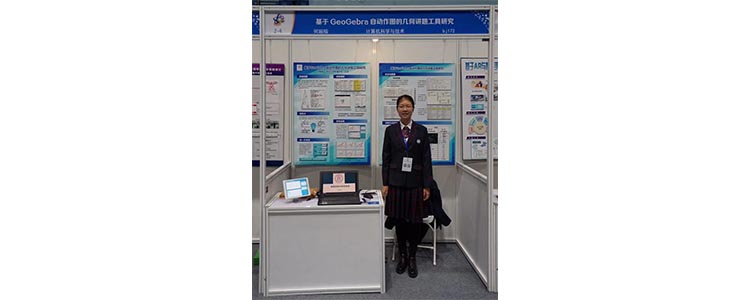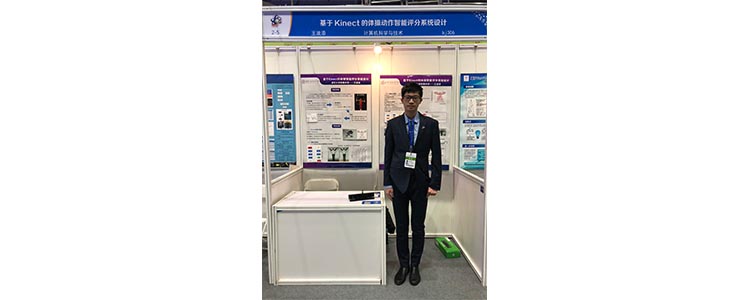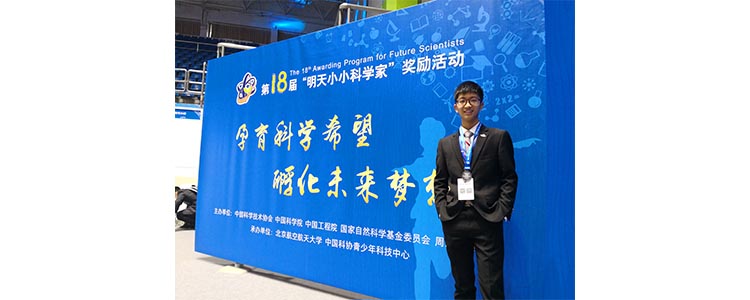The final selection of 18th "The Awarding Program for Future Scientists" was successfully held at Beihang University, from October 30th to November 4th. This annual activity was jointly sponsored by China Association for Science and Technology, Chinese Academy of Sciences, Chinese Academy of Engineering, National Natural Science Foundation of China and Hs Chau Foundation of Hong Kong. After several days of intense and fruitful final assessment, four Senior Three students from Tsinghua University High School (TUHS) stood out with excellent results. Among them, He Wanrong from Class 10 and Zuo Siqing from Class 12 won the first prize. Wang Botian from Class 11 and Liu Yudong from Class 8 received the second prize. It is worth mentioning that the research projects of Zuo Siqing, Wang Botian and Liu Yudong are all from the school’s Advanced Research Laboratories.
During the final selection, expert reviews took a series of evaluation steps such as research project Q&A, comprehensive quality inspection, and knowledge level testing. At the same time, various science and technology activities were organized to meet the needs of the eager youngsters, like lectures given by the Nobel Prize winners, visits to national key laboratories and other science and technology venues. The candidates were also invited to participate in Beihang University science and technology club activities and “Future Scientists” Alumni Reunion.

Prize-winners: Wang Botian, He Wanrong, Liu Yudong, Zuo Siqing (From left to right)
He Wanrong’s project is “The study of geometry lecturing tool based on GeoGebra automatic plotting”, her tutor is Zhou Jianjun.
Project introduction: Due to the lack of interaction between graphics and text in the process of geometry exercises, the lecturer has to switch back and forth to find the corresponding graphic elements. Teachers’ accent and non-standard drawing can be a problem as well. In this project, a synchronized interactive “text + voice + graphics” software upon the mentioned geometry problems is thus developed. According to its voice synthesis system, corresponding graphic element in the text will be highlighted in bold or in a different color. This tool will also vividly display the dynamic evolution process of geometric auxiliary lines drawing and geometric figure marking in the process of problem solving. It is possible to freely control the progress of lecturing without manual teaching and manual search for corresponding graphic elements. Teachers can amend the answer details repeatedly according to students’ feedback to form a set of typical examples, which might be conducive to online teaching and pave the way for resource sharing. To make it better, this project needs to be continuously improved in practical applications. More real samples of geometric exercises will be collected and tested in order to further improve the accuracy of the "text + voice + graphics" synchronized interactive lecturing. The automatic drawing of initial graphics based on further study of full-automatic intelligent mapping technology will reduce the difficulty of its production and promotion.

He Wanrong is showing her project “A study of geometry lecturing tool based on GeoGebra automatic plotting”
Zuo Siqing’s project is “A self-powered remote rock burst monitor based on piezoelectric power generation technology”. His tutors are Qiu Nan and Shen Dashan.
Project introduction: As the mining depth of most coal mines in China exceeds one kilometer, the potential safety hazards in mines are becoming increasingly severe and the life of underground personnel is seriously threatened. The monitoring and prevention of mine earthquakes is an urgent problem. In this project, the piezoelectric energy generation technology is used to capture the seismic energy, forming a self-powered wireless sensor network which can also conduct remote mine seismic detection. Synthesizing many disciplines such as physics, mechanics, electronic circuits and computer programming, a self-powered remote mine seismic detector based on piezoelectric power generation technology is successfully developed , which will enable the seismic signal to be sent out with the energy generated from mine earthquakes. Therefore, it provides a possibility for judging the occurrence of the earthquake and enables timely rescue.

Zuo Siqing at the event
Wang Botian’s project is “Kinect based gymnastics intelligent scoring system design”. His tutors are Qiu Nan and Shen Dashan.
Project introduction: Athletic gymnastics is one of the competition event in Olympic Games. The current gymnastics scoring mode is manual scoring. Therefore, the credibility of gymnastics results is often questioned because of the subjectivity. For this problem, this project puts forward the concrete idea of intelligent scoring of gymnastics action to enhance the accuracy and objectivity of the gymnastics competition results. This project takes advantage of the Kinect v2 launched by Microsoft to realize the reading of bone nodes, and uses Visual Studio and MATLAB to track bone points, process and score the bone data. This thesis displays the algorithm of extracting target angle and gesture recognition, and initially realizes the Kinect-based gymnastics scoring system, which systematically realizes the intelligent scoring of static action like cross support as an example. The preliminary results of this thesis can be further applied to many fields such as distance physical education, medical monitoring and so on.

Wang Botian is showing his project "Kinect based gymnastics intelligent scoring system design"
Liu Yudong’s project is "The Gesture Control Algorithm Based Robot that aids the elderly". The tutors are Qiu Nan and Tan Hongzheng.
Project introduction: China's aging problem is becoming increasingly serious. The elderly have restricted mobility due to illness or disability. This project proposes a robot based on gesture control algorithm. The robot consists of smart induction gloves, a smart mobile car equipped with a McNane wheel, a mechanical control arm and a mechanical hand. The robot can control its movement through the multi-sensory information fusion technology, which can effectively improve the operational performance and adaptability of the humanoid manipulator, and can complete all-round indoor gesture detection and fulfill tasks. Namely, its practical value lies in helping the elderly grab some objects in daily life.

Liu Yudong at the event
“The Awarding Program for Future Scientists” aims at selecting and training high school students talented for science and technology innovation. Once the outstanding students with research potential are found, they are encouraged to study science and technology in the future. The high school students who are highly qualified and have personal scientific research experiences are welcomed. Through the examination of the comprehensive quality of students' innovative consciousness and scientific research ability, 100 students will be granted with awards and scholarship funding in different levels and three of them will be awarded as "Future Scientists". Students can apply for the activity from May to June annually. Applicants can register on the official website (http://mingtian.xiaoxiaotong.org). After registration, one can obtain the registration number and fill in and submit the application materials online. The initial evaluation comes in August in the form of expert online review. Based on the evaluation, 100 students will enter the final round. Names of finalists will be published on the official website and the final evaluation is in mid-to-late October.
“The Awarding Program for Future Scientists” is a selecting and training activity for young talents in China. After nearly 20 years’ development, with the joint efforts of all the organizers and the support of all walks of life, the organizational procedures have been perfected day by day. Its social influence has been continuously improved as well. It has become an influential brand in the field of science and technology education for youngsters in China.
The Advanced Research Laboratories in Tsinghua University High School has been established in cooperation with the famous American school: Thomas Jefferson High School for Science and Technology. The outlook is to train outstanding researchers. At present, there are six Advanced Research Labs. They are different from the regular curriculum laboratories. It is not only for regular teaching but also for projects (engineering projects or scientific projects). The six laboratories are Energy System Laboratory, Robot and Automation Laboratory, Computer Science Laboratory, Resource Environment and Geographical Information Laboratory, Life Science Laboratory and Chemical Analysis Laboratory.
Text & Photo: Xie Yuankai
Translate: Li Jingping
Proofread: Cheng Weihang
Review: Wang Tian, Qiu Nan and Tan Hongzheng
Edit: Administrative Management Center